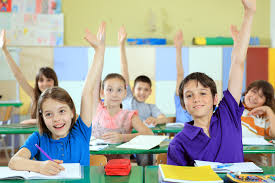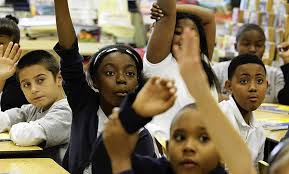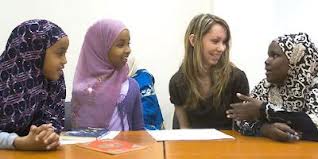Denita Donahue
Authored on: Mar 20, 2014 12:41 PM
Subject: A & AA Reflection & Lesson - Donahue
African and African American Reflection by Denita Donahue
“The atmosphere at the city's high schools is so hostile to Somali students that Alin Ahmed finds herself having to stand up for newly arrived immigrant students.”
St. Cloud Tensions
After reading this article I felt that is was critical to start teaching tolerance and acceptance at a young age. “According to Piaget’s cognitive developmental theory, 3- to 6-year-old children are in the preoperational stage of thinking in which they focus on what they can see. Preschoolers are likely to form stereotypes about others based on observable characteristics, material possessions, or preferences (e.g. likes or dislikes).”Reducing Stereotypes
I want my kindergarten students to be prepared for what is ahead of them. Their natural tendency is to organize their thoughts by what they see. I want to help them understand that what they have heard about a particular group of people may not always be true. I want to expose them to as many cultures as I can and help them appreciate the uniqueness of each of them.
African and African American Lesson Plan
Grade Level: Kindergarten
Objective: The students will be able to identify truths and stereotypes of White, African American and Somali American Students.
Supplies:
Picture of White American Students
Picture of African American Students
Picture of Somali American Students
Blank cards to write on & a marker
Two baskets labeled “Truths” and “Stereotypes - Not True”
A tray to store all items on the “free choice” shelf
Snappy Launch - Have the 3 pictures of students on the floor. Have the children gather around them in a circle. Invite the students to look around at the pictures but do not touch.
Lesson: We are going to learn about stereotypes today. A stereotype is an untrue belief that one group of people have for another group of people. Some people stereotype by name calling. I have two baskets here, one labeled “Truths” and one labeled “Stereotypes - Not True”. We are going to look at these pictures again and see if you have heard some true and not true things about these people.
Hold up the picture of the White American Students. Discuss name calling with the students.
-
Have you ever heard someone call someone else a name?
-
What names have you heard?(Write two words down)
-
How do you think it made that person feel?
-
How would you feel if someone called you a name?
-
Do you think that is true about the person in the picture? (No, its a stereotype. Let’s put that name in the basket of Stereotypes.)
-
What are some nice things you could say about the students in this picture? (Write two words down)
-
Are these words true about the person in the picture? (Yes, These are truths. Let’s put them in the basket of Truths.)
Hold up the picture of the African American Students. Discuss name calling again. 
-
What is different about these students?
-
What is the same about these students?
-
Have you ever heard someone call these students a name?
-
What names have you heard?(Write two words down)
-
How do you think it made that person feel?
-
Do you think that is true about the person in the picture? (No, its a stereotype. Let’s put that name in the basket of Stereotypes.)
-
What are some nice things you could say about this person? (Write two words down)
-
Are these words true about the person in the picture? (Yes, These are truths. Let’s put them in the basket of Truths.)
Hold up the picture of the Somali American Student. Discuss name calling again.
-
What is different about these students?

-
I wonder why they are wearing a scarfs?
-
What is the same about these students?
-
Have you ever heard someone call someone like these girls a name?
-
What names have you heard?(Write two words down)
-
How do you think it made that person feel?
-
Do you think that is true about the person in the picture? (No, its a stereotype. Let’s put that name in the basket of Stereotypes.)
-
What are some nice things you could say about this person? (Write two words down)
-
Are these words true about the people in the picture? (Yes, These are truths. Let’s put them in the basket of Truths.)
Gather up the baskets, pictures and labels and put them on the tray. Have the tray available at free choice time. Have each of the children sort the truths and stereotypes into the correct baskets.
Assessment:
Students will show their understanding of of truths and stereotypes by sorting the pictures and putting them in the correctly labeled basket with 90% accuracy.